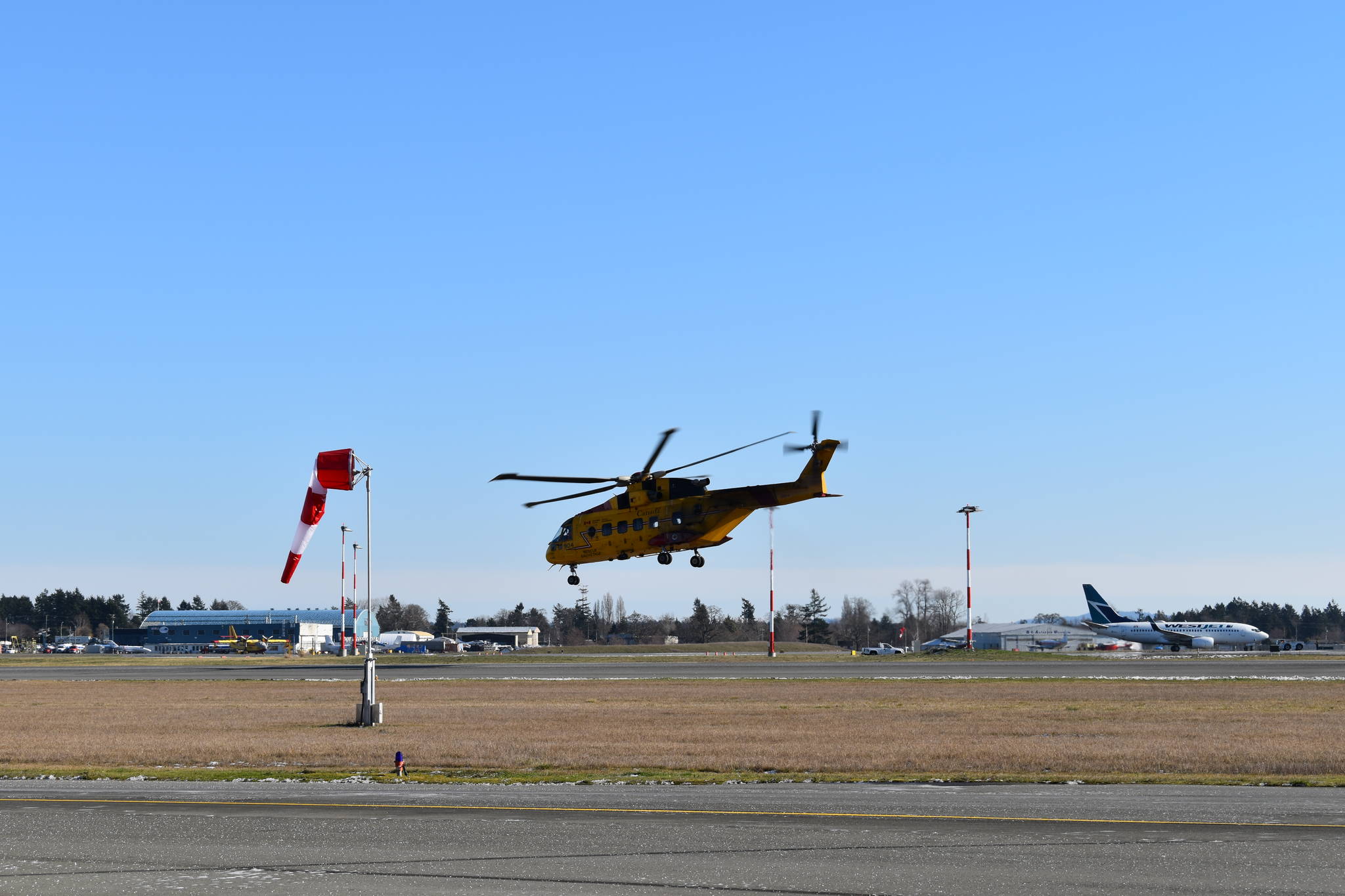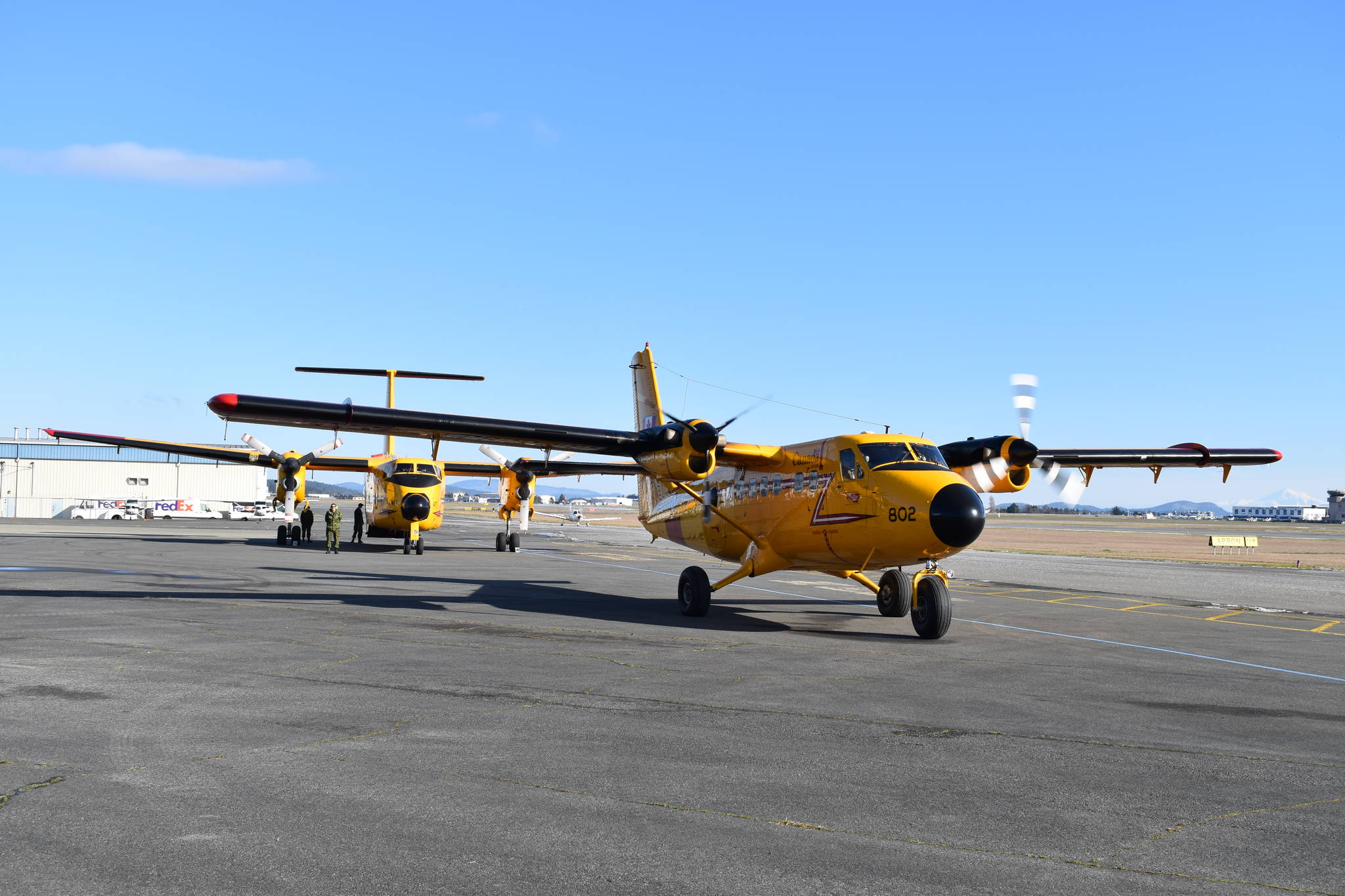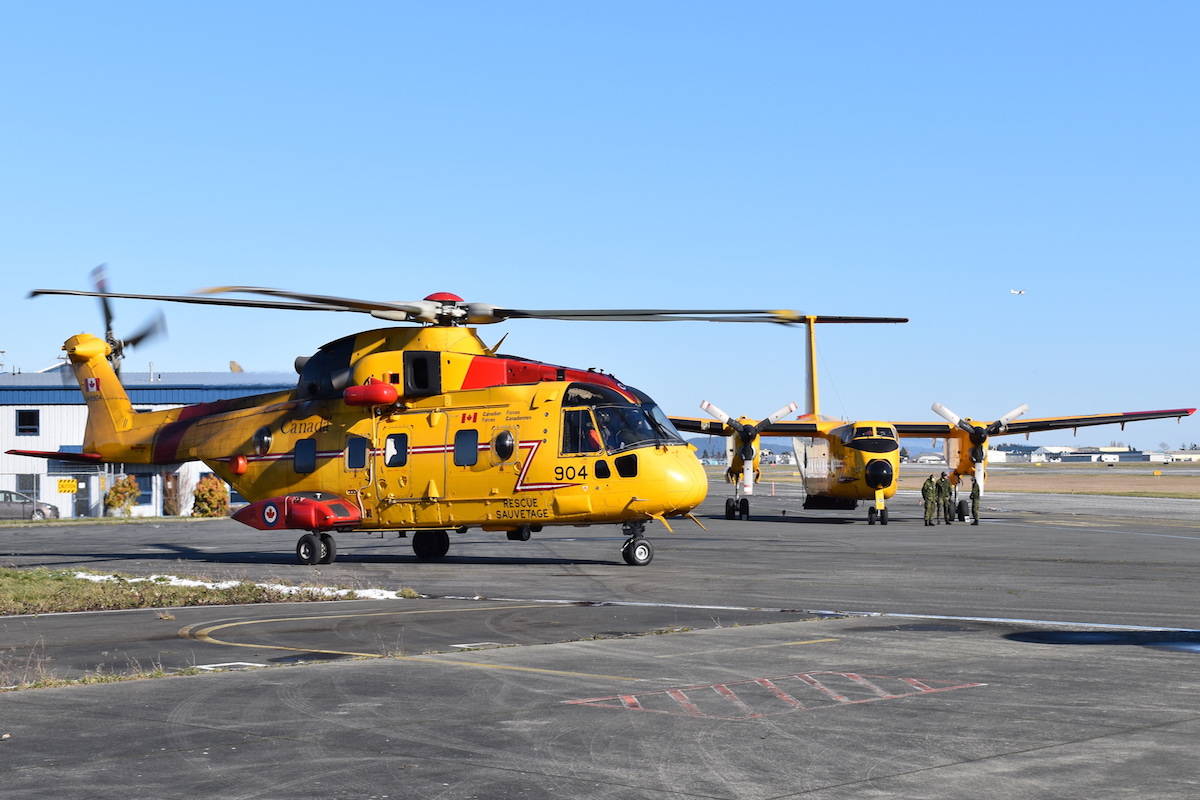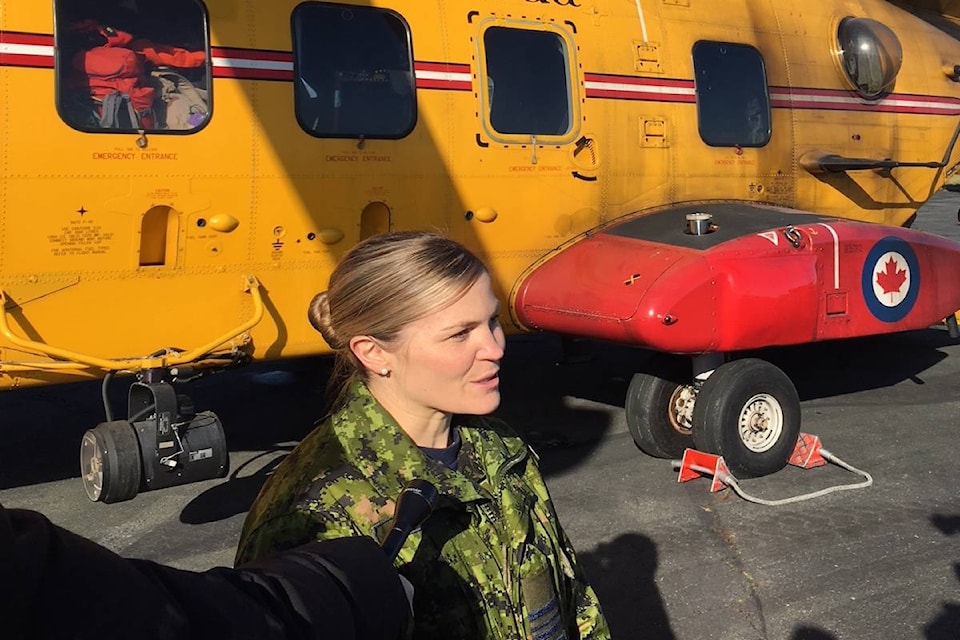442 Transport and Rescue Squadron are conducting a series of practice scenarios as part of their annual search and rescue training exercise (SAREX). The exercise is based at Victoria Airport from Tuesday through Thursday, Feb. 7.
Major Kristen Simpson is commanding the exercise, which utilizes three aircraft, 73 military personnel and co-ordinates 40 different military and civilian agencies. The aircraft being used are a CH-149 Cormorant helicopter, a CC-115 Buffalo and a CC-138 Twin Otter, fixed-wing aircraft.
ALSO READ: Flares used in Greater Victoria training exercise prompt 911 call
All three aircraft are easily recognizable by their distinctive yellow paint schemes, although the exercise’s training scenarios are mostly out of public view.
Simpson, who is an aerospace engineer, likens her role to that of a ‘momma bear’, conscientiously looking after the personnel under her command. She operates from a ‘Joint rescue coordination cell’ and oversees the administration, discipline and execution of the exercise. She is assisted by the Search Master, who is responsible for directing the search. Simpson notes that the exercise is progressing as intended and that all agencies are working well together. “We are trying to simulate on-scene decision making. Adapt and react.” she added.
A snapshot of the training was last night’s mission, which involved the specialist Search and Rescue Technicians, known as SAR Techs.
The brief was a simulated medical rescue. A vessel had sunk three nautical miles off the coast. With little information, the specialist crews were scrambled to locate and attend the ‘sailors in distress.’ Inside just 1.30hrs, they found the crew’s liferaft, illuminated the cold February night with flares, and had quickly assessed a combination of factors that contribute to the ‘survivability’ of themselves and the distressed.
Master Corporal, Nathan Seal described how his team of SAR Techs were flown over the area in the Buffalo and parachuted from the aircraft, wearing full scuba gear, at 3000ft. Once they had swum and clambered aboard the liferaft, they provided first-aid and the five sailors were then winched to safety by the Cormorant helicopter.
Simpson said that the SAR Techs’ motto is ‘So others may live’ and apart from being trained in parachuting, they are also highly trained in paramedicine, cold-weather survival and mountain rescue.
Captain Sean Petrie, who has planned and organized some of the logistical support, also has the difficult job of operating the hoist on the Cormorant helicopter. He explained the purpose of the training. “You have Currencies and Proficiencies. Currencies are keeping your skills up. Proficiencies are getting excellent at those skills and challenging yourself to learn new things and do them in different ways.”
442 Transport and Rescue Squadron maintain operational vigilance during the exercises and can conceivably be called away to mount a real rescue.
Petrie says the more realistic the training, the better he performs.”It’s using our skills on a daily basis, when the call comes in and we have to hook, that’s what we do.”
nick.murray@peninsulanewsreview.com
Like us on Facebook and follow us on Twitter



